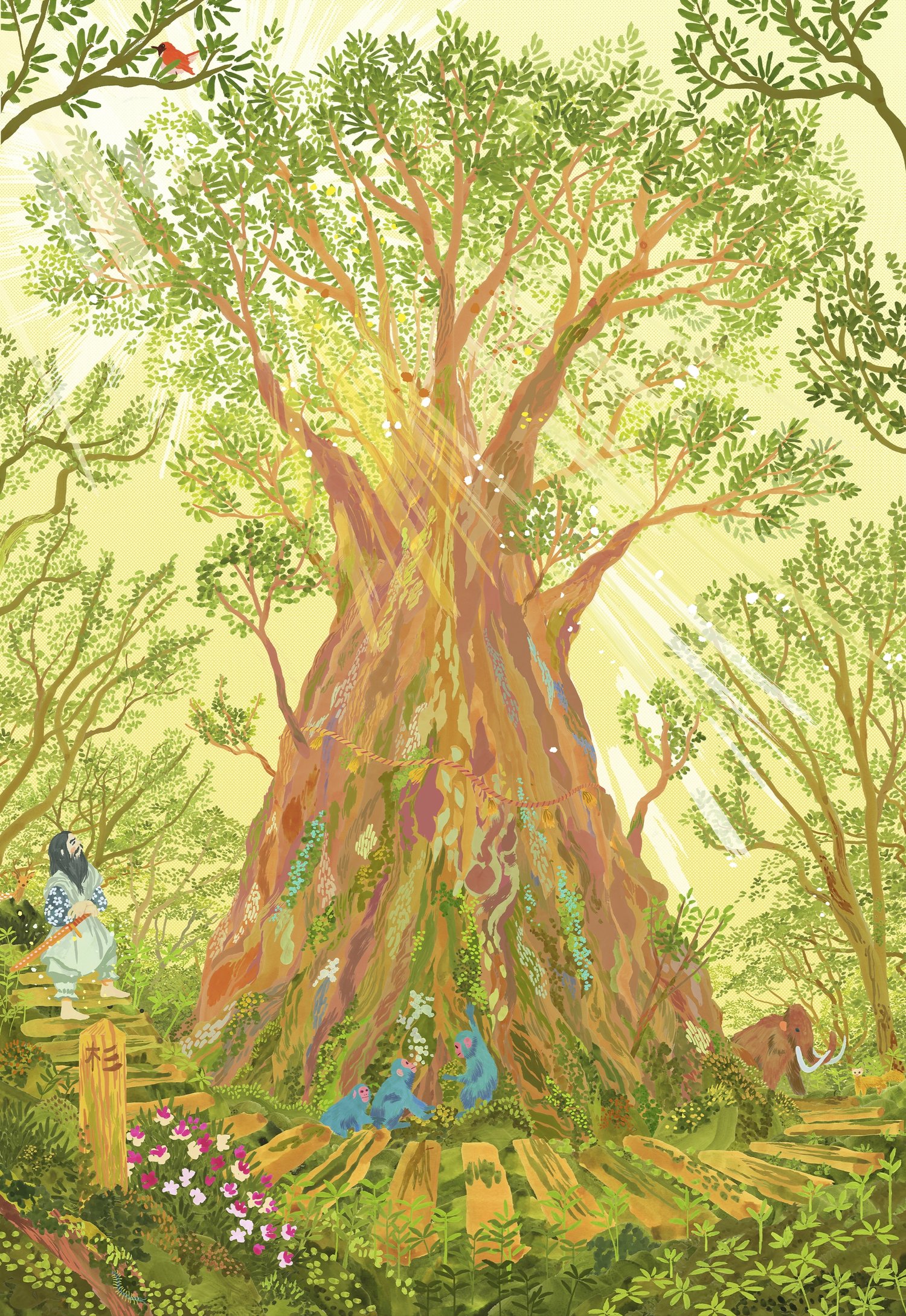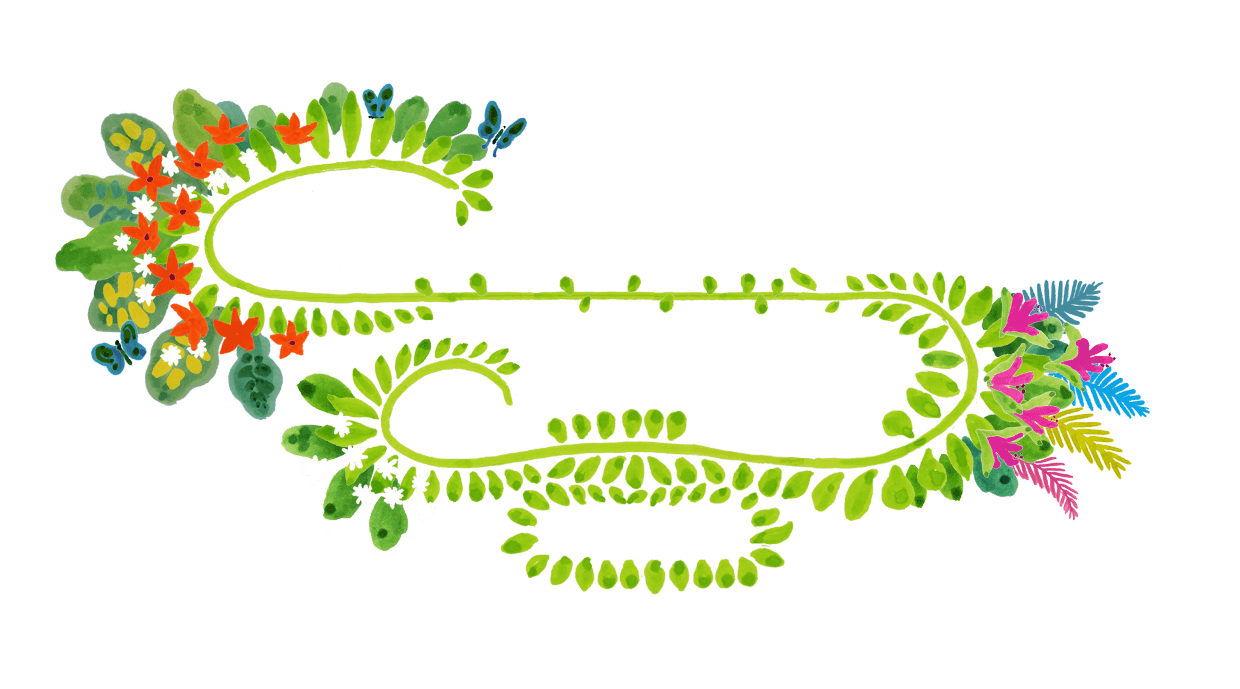
Insight
The Sugi Tree ( 杉 )
There is a Jomon Sugi tree so old it could have been a wise elder in the days when wooly mammoths still roamed the earth. The Jomon Sugi, said to be as old as 7,200 years, is found amongst a forest of ancients on the Japanese island of Yakushima. Here atop a 600 meter mountain where the air is damp and chilly, but sweet and seeded with healing terpenes, are primeval forest stands of Yuku Sugi with occasional elder Jomon Sugi.
Sugi trees at least 1,000 years old are referred to as Yaku Sugi and the rarer Jomon Sugi are thought to be at least 2,200 years old, dating back to the Jomon period. The Jomon Sugi of Yakushima is the embodiment of a nurturing mother. She currently and happily supports thirteen other woody species that nestle and grow upon her, creating a mini forest ecosystem within the wider forest ecosystem.
She is also the inspiration behind and the embodiment of SUGi, our organization and the community of rewilders around the world we have gathered. SUGi strives to uphold the ideals of the Jomon Sugi — longevity, connection and above all the free, interconnected strength of forests. Think of the Jomon Sugi as the boundaryless banner of the Rewilding Generation!
This special tree species endemic to Japan (Cryptomeria japonica), is closely related to the regal coastal redwoods cathedrals of North America. Some have called these Sugis ‘the redwoods of Japan’. The similarities are obvious: majestic Sugi trees can reach up to 70m in height with trunk diameters of 5m and life spans easily into the thousands of years.

According to Japanese mythology, the first Sugi trees were created when the deity Susano-o plucked hairs from his beard and scattered them across the countryside. This ancient myth indicates that since ancient times the Sugi tree has been highly regarded and to this day beautiful examples can be found around shrines and temples where the trees are considered highly sacred and protected. This could partly be due to the quality of the wood that is venerated for it’s perfection of form and ornamental quality that has been used for the building of temples and royal palaces for thousands of years.
This rare and splendid tree may be the story behind SUGi’s name, but each part of the world has its own amazing native trees. In creating pocket forests that mirror and bring back the ancient forests, we’re working to celebrate the sacred beauty, power, and purpose of all trees when planted in the home soil from which they’ve evolved.




